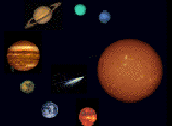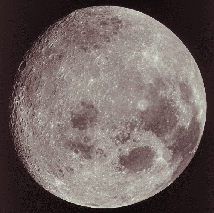Space Geology

 Imagine that you have a cup full of the average composition of the Solar System. You take it to the Solar Furnace in Spain and heat it until everything turns into a vapor. Under carefully controlled conditions you allow the vapor to begin to cool down and watch what happens. Some elements will begin to "precipitate" from the vapor at much higher temperatures than others. For example, Calcium (Ca) and Magnesium (Mg) are very refractory and leave the vapor state at temperatures greater than 4000 degrees kelvin. Others, such as Hydrogen and Helium remain in the vapor until absolute zero kelvin is approached. Elements begin to condense as a function of decreasing temperature.
Imagine that you have a cup full of the average composition of the Solar System. You take it to the Solar Furnace in Spain and heat it until everything turns into a vapor. Under carefully controlled conditions you allow the vapor to begin to cool down and watch what happens. Some elements will begin to "precipitate" from the vapor at much higher temperatures than others. For example, Calcium (Ca) and Magnesium (Mg) are very refractory and leave the vapor state at temperatures greater than 4000 degrees kelvin. Others, such as Hydrogen and Helium remain in the vapor until absolute zero kelvin is approached. Elements begin to condense as a function of decreasing temperature.
 As noted several times during the course, in the early history of the solar system meteorite bombardment of planetary surfaces (including Earth) was a very important process. A good introduction to impact structures is located at Impact structures
As noted several times during the course, in the early history of the solar system meteorite bombardment of planetary surfaces (including Earth) was a very important process. A good introduction to impact structures is located at Impact structures
The Students for the Exploration and Development of Space (SEDS) at the University of Arizona have produced a wonderful WWW Home Page which I will refer you to rather than give you my notes for this chapter. As you read make sure you think about the differences between the inner and outer planets and the terresterial versus the "gas bags". When you get to the Nine Planets Tour you should take a look at the Overview of the Solar System and the read something about each of the nine planets in our Solar System....and don't forget about the moon!

Nine Planets to begin the tour.
- With the exception of Pluto, the outer planets:
- are bigger and higher density
- are bigger and lower density
- are smaller and higher density
- are smaller and lower density
- Stishovite (recall form Chapter 2) and quartz are polymorphs. The fundamental difference is that in stishovite the silicon ion is surrounded by 6 oxygens where as in quartz the silicon ion is surrounded by 4 oxygens. Therefore, in an impact structure which polymorph would form if the pressure was sufficiently high?
- quartz
- stishovite
- All of the planets have at least one moon:
- True
- False
- Venus has a higher albedo than Earth. Therefore, Venus absorbs more of the incident solar radiation than Earth.
- True
- False
Review - Meteorite Impact Structures
Return to the Physical Geology Home Page
 As noted several times during the course, in the early history of the solar system meteorite bombardment of planetary surfaces (including Earth) was a very important process. A good introduction to impact structures is located at Impact structures
As noted several times during the course, in the early history of the solar system meteorite bombardment of planetary surfaces (including Earth) was a very important process. A good introduction to impact structures is located at Impact structures
 Imagine that you have a cup full of the average composition of the Solar System. You take it to the Solar Furnace in Spain and heat it until everything turns into a vapor. Under carefully controlled conditions you allow the vapor to begin to cool down and watch what happens. Some elements will begin to "precipitate" from the vapor at much higher temperatures than others. For example, Calcium (Ca) and Magnesium (Mg) are very refractory and leave the vapor state at temperatures greater than 4000 degrees kelvin. Others, such as Hydrogen and Helium remain in the vapor until absolute zero kelvin is approached. Elements begin to condense as a function of decreasing temperature.
Imagine that you have a cup full of the average composition of the Solar System. You take it to the Solar Furnace in Spain and heat it until everything turns into a vapor. Under carefully controlled conditions you allow the vapor to begin to cool down and watch what happens. Some elements will begin to "precipitate" from the vapor at much higher temperatures than others. For example, Calcium (Ca) and Magnesium (Mg) are very refractory and leave the vapor state at temperatures greater than 4000 degrees kelvin. Others, such as Hydrogen and Helium remain in the vapor until absolute zero kelvin is approached. Elements begin to condense as a function of decreasing temperature. 